$20 Pantry Organization Makeover

- Plastic bins (my mother-in-law was getting rid of three of these so I took them to use for storage)
- Small cookie canisters
- Self-adhesive shelf liner
- Wooden picks
- Wire cutters
- Hot glue gun/sticks
- Vinyl letters
- Transfer tape (I made my labeling words on my Silhouette Cameo machine...you can purchase stencils at most craft stores if you don't have a machine.)
Enjoyed the project?
Comments
Join the conversation
-
 Biwako
on May 13, 2021
Biwako
on May 13, 2021
Good hint about the clear candy containers. I hadn't thought of using the kind that come with the all-clear plastic lids and are a bit flexible and easy for bugs to get inside, but they would do nicely for certain non-food items. But I do save the square shaped large nut containers/plastic jars to use for flours and grains. Maybe those are the same as what Gail refers to.
I have some on top of the fridge and others stacked in two rows inside the closet, with labels on their round covers, which face out. Behind the two rows of plastic jars, which leave quite a lot of space, I keep similar products in taller containers or in large bags with self-zippers. If a repurposed plastic container such as I mention above is going to be out on a counter or on top of the refrigerator, I often cover its label, or even most of its main body, with some colorful paper, and seal that against moisture with laminating film or the like. (If you try this, keep in mind that on top of the fridge, it is going to be warmer than elsewhere, so don't put things there that could be harmed by the heat. Whole-grain flours, and nuts, for instance. I do keep baking soda, white and brown sugar up there, as well as white all-purpose flour, which has a fast turnover in our house.)
-
-
 Gainorhillegass
on Aug 11, 2021
Gainorhillegass
on Aug 11, 2021
It is a good way to get storage, expecially when you don't have enough kitchen drawers for towels and utensils and junk! I do this with empty white kitty litter jugs. I cut the tops off, decorate/label them and store things in them on shelves in pantry. I use glass jars of all sizes to store remainders of pasta, fried fruit, nuts, flour, sugar - partial bags or boxes of any foods. Keeps them fresh and bugless. Plastic containers give off a taste that glass doesn't do. I use them in fridge to save broths and half of a can of soup or vegetable I didn't use up in recipes. I like to recycle, as you do! I pickle things and prefer glass to plastic. I use small bins in fridge to hold small jars of condiments, olives, pickles, and just pull the bin out to get one. There is a lot one can do with recycled containers.
-



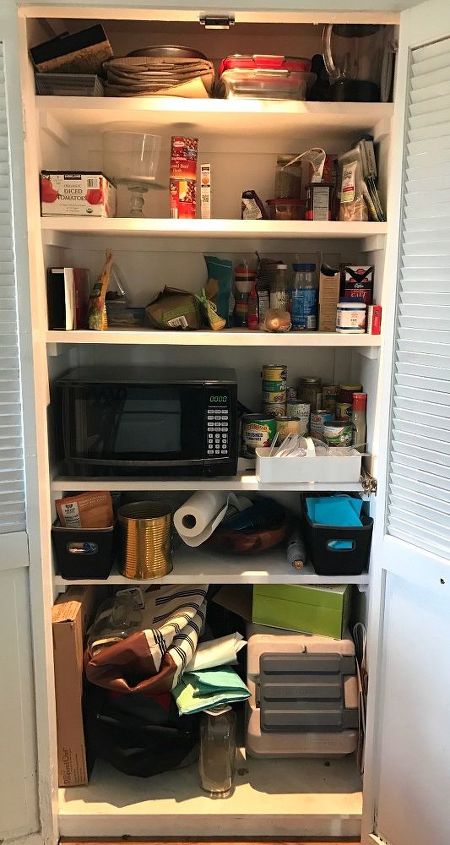


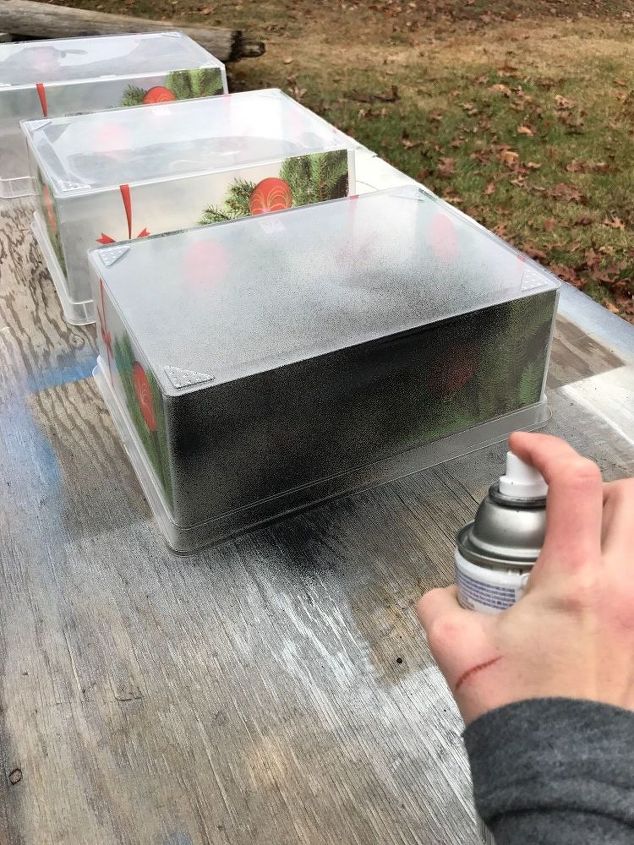




















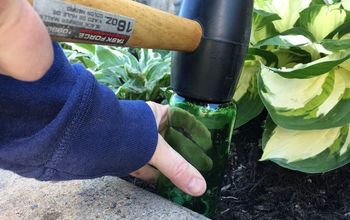
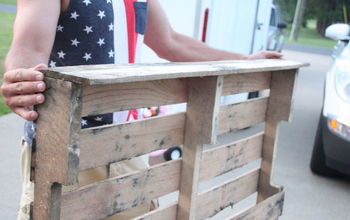



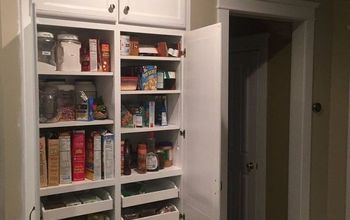
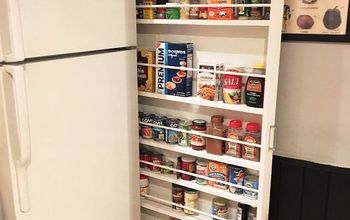
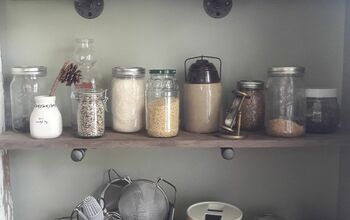
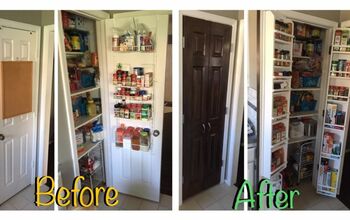
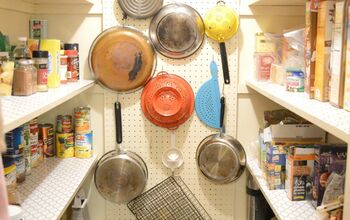
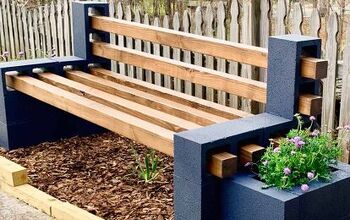
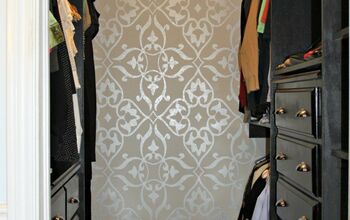
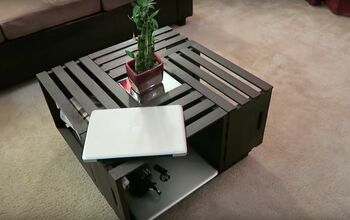
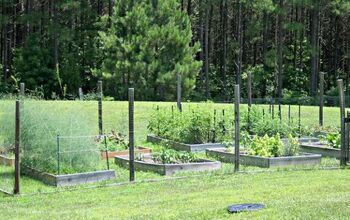
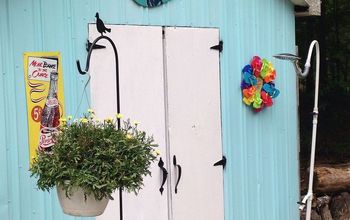
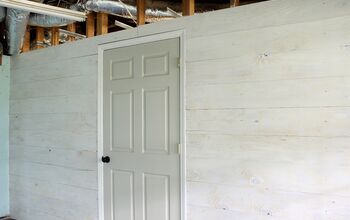
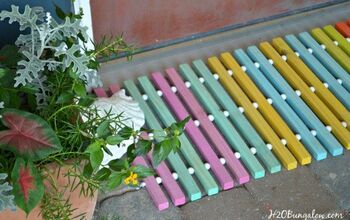
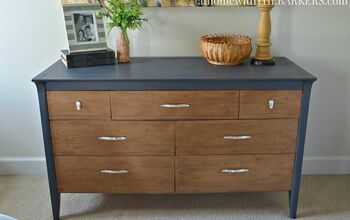
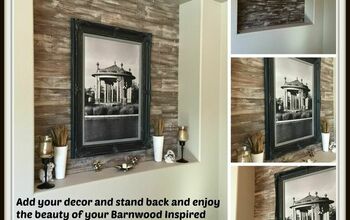
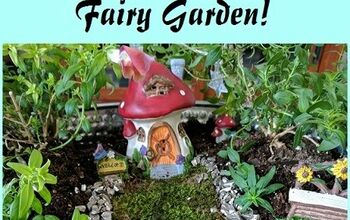
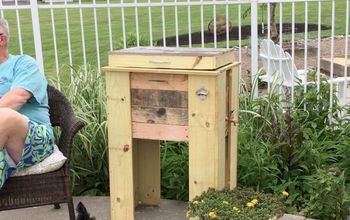
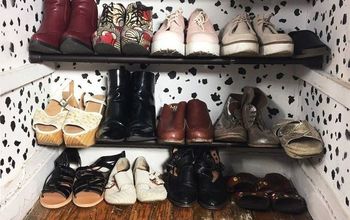
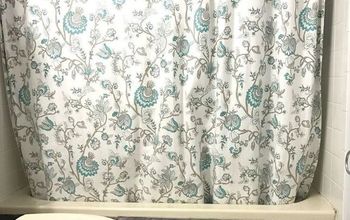
Frequently asked questions
Have a question about this project?
that is a fantastic job, but why do you have the microwave in there??
Why didn’t you leave cleat?
The microwave shouldn't be in a closet lime this. It needs airflow?